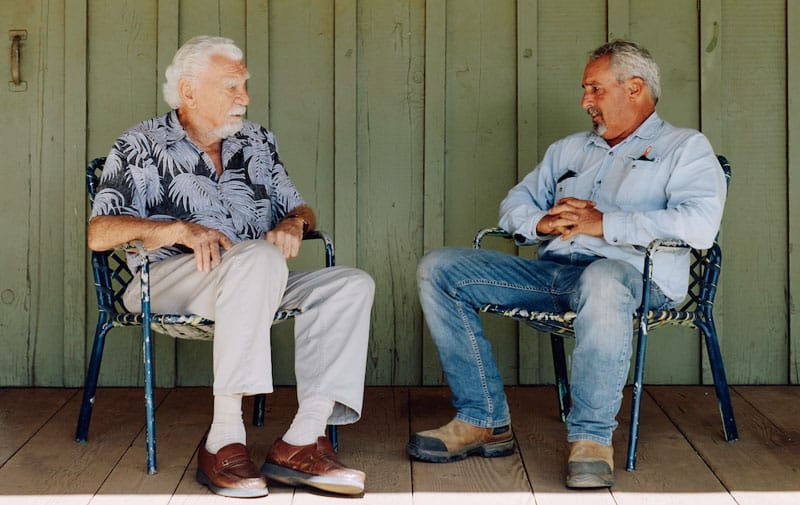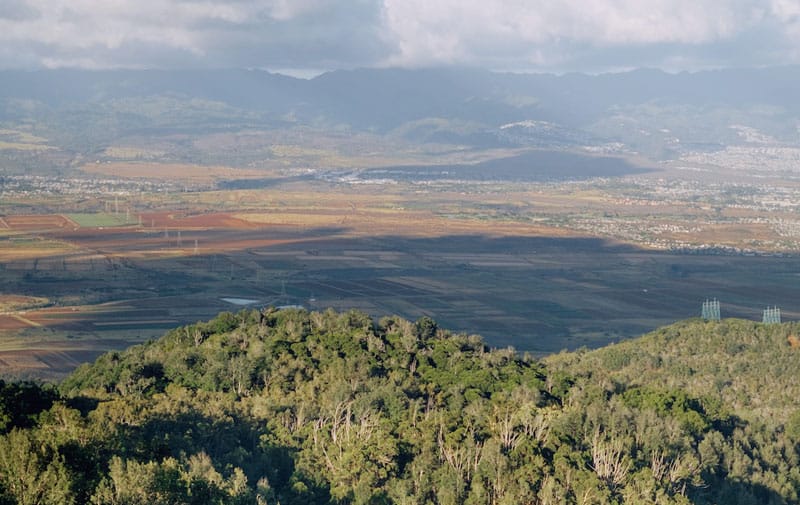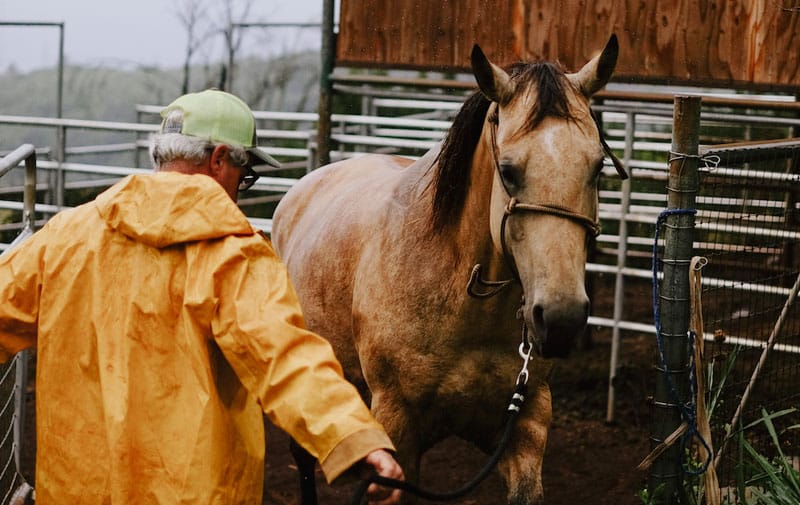Spanning swaths of the mountain range and grasslands inland of Ko Olina, Pālehua Ranch is more than just a ranch. Named for the greater area of Pālehua, it rests among a land rich in cultural, historical, and ecological significance, one that reveals the power of place.
Because of the discovery of a large heiau, or place of worship, underscored by oral traditions that speak of the area, cultural scholars believe Pālehua served as a training ground for warriors in ancient times. In Hawaiian, pā means “a stone enclosure.” Lehua refers to the ʻōhiʻa tree, known for both its bright flower and sturdy wood—the latter prized by warriors in crafting weaponry. As such, Pālehua translates to “enclosure of the warrior.”

Within Pālehua, on Mauna Kapu, a peak on the Waiʻanae Range, sweeping vistas are granted in all directions—to the east, one can see Maui and Moloka‘i and, on clear days, even Maunakea on Hawaiʻi Island; to the west, Kauaʻi and Niʻihau. A vantage point of that magnitude would serve well the ʻōlohe, or guardians of the eastern and western gates of Waiʻanae, who sought an advantage in sighting intruders arriving by land or sea.
Waves of golden guinea grass unfold along Waiʻanae Range’s lower slopes beneath solitary kiawe. Below, a latticework of neighborhoods and roads buzz with activity. Sounds of modernity are only echoes at Pālehua Ranch. The wind instead holds court: a sweeping torrent from the mountains, a held breath, a whisper among boughs and grass. Above all, as it has for millennia, the sky reigns bright and vast.

McD Philpotts was raised at Pālehua Ranch. As a boy, he roamed its ridges, valleys, and grasslands—often on horseback and often alone. As a man, he serves as the ranch caretaker. Philpotts’ ties to the land are myriad and rich. He’s both kanaka maoli (Native Hawaiian) and a descendent of James Campbell, a prominent Hawaiʻi land developer and industrialist of the 1800s. Though his dual ancestry informs his understanding of the importance of land stewardship, the ranch’s real significance lies closer to his heart: Pālehua is home.
Dirty and hot, ranch work is often tedious: tending to animals, checking water troughs, mending fences, maintaining roads. Duties begin at sunrise with little set routine. Cattle may breach a fence, requiring an impromptu roundup; a tractor might break down, demanding an immediate fix. It’s not an easy life, explains McD with a wry smile. But there is an upside: “I have a bigger office than most.”
Most of Pālehua Ranch’s 40 head of cattle are of the Brahman breed, and like the kiawe they seek refuge beneath, their tolerance for arid conditions suits them well on the dry leeward lowlands. Throughout the year, cattle roam a patchwork quilt of grassland parcels. Rotation of these grazing areas is critical. During drought season, uneaten grass transforms from feed into something much more dangerous: fuel. It serves as easy tinder during electrical storms, or worse in negligent human hands. In 2014, children playing with a lighter set off a fire that ripped through the landscape, scorching 500 acres.

Before the Wild West emerged in America in the 19th century, Hawaiian paniolo, or cowboys, honed a distinct island tradition in the middle of the Pacific. Though prominent on Hawaiʻi Island, paniolo culture continues in small, vibrant pockets on Oʻahu. Ranch horses, like the American paints and buckskins at Pālehua, are adept at navigating the area’s various terrains. When flushing out errant cows, the horses nimbly maneuver through forest trails and craggy outcroppings, gulches and grasslands. But the best times come when work is done, and they can run wild and free.
Scientists call it psithurism—the sound of wind whispering through the trees, a forest’s auditory signature. Pālehua’s song is unique. It resonates with notes of native plants found nowhere else in the world: stands of noble koa, the elegant ‘ōhiʻa with her crimson lehua, the fragile naio, and the fragrant ‘iliahi. Rare native ferns thrum gently alongside the ancient forest’s sweet melody, while ʻukiʻuki, a plant with royal purple berries used for dyes, add pops of cheer. Standing in the forest, all one needs to do is listen to hear its music.

At 25 years old, Ed Olson, now the owner of Pālehua Ranch under the Olson Trust, launched an exceptionally profitable career in gunite, a specialty concrete. Over the next 60 years, construction and commercial development strengthened his portfolio, and today, the 86-year-old is one of Hawaiʻi’s largest landowners. Over the last decade, Olson has gifted millions of dollars to entities that champion land stewardship. In 2009, land purchases brought the Olson Trust up to its current 3,000 acres of ranch, agricultural, and conservation land at Pālehua. Working with the Hawaiian Islands Land Trust, the Olson Trust dedicated 1,200 acres as a conservation easement, protecting the land from residential or commercial development.
“Back then, I was out making money, trying to make my way in the world, spraying concrete all over the place. That’s all I knew. Later I was able to softly look at the world in a different way, and I said, ‘Gee, I don’t really want to spray concrete. I’ve sprayed enough.’” — Ed Olson, owner, Pālehua Ranch
Hawaiʻi’s geographic isolation enabled the development of unique flora and fauna, but it has also served a role in their decline: Native plants are especially vulnerable to introduced diseases and competing, invasive species. Pālehua Ranch partners with entities like Mālama Learning Center to establish reforestation and education programs. At an onsite nursery, the nonprofit grows seedlings, and soon, students from nearby high schools will be able to learn firsthand the importance of mālama ʻāina, or taking care of the land, and safeguarding it for the next generation.
